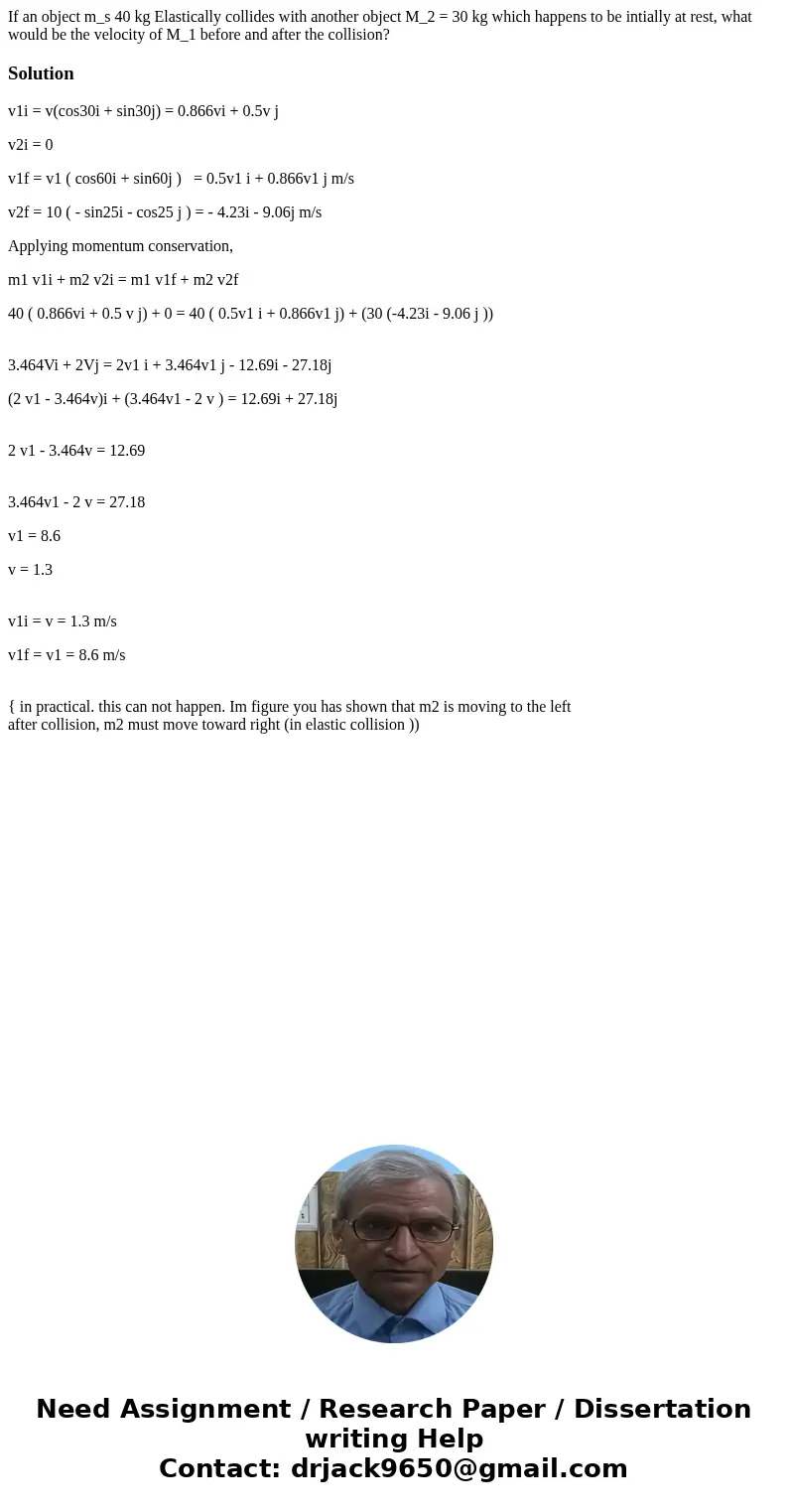If an object ms 40 kg Elastically collides with another obje
If an object m_s 40 kg Elastically collides with another object M_2 = 30 kg which happens to be intially at rest, what would be the velocity of M_1 before and after the collision?
Solution
v1i = v(cos30i + sin30j) = 0.866vi + 0.5v j
v2i = 0
v1f = v1 ( cos60i + sin60j ) = 0.5v1 i + 0.866v1 j m/s
v2f = 10 ( - sin25i - cos25 j ) = - 4.23i - 9.06j m/s
Applying momentum conservation,
m1 v1i + m2 v2i = m1 v1f + m2 v2f
40 ( 0.866vi + 0.5 v j) + 0 = 40 ( 0.5v1 i + 0.866v1 j) + (30 (-4.23i - 9.06 j ))
3.464Vi + 2Vj = 2v1 i + 3.464v1 j - 12.69i - 27.18j
(2 v1 - 3.464v)i + (3.464v1 - 2 v ) = 12.69i + 27.18j
2 v1 - 3.464v = 12.69
3.464v1 - 2 v = 27.18
v1 = 8.6
v = 1.3
v1i = v = 1.3 m/s
v1f = v1 = 8.6 m/s
{ in practical. this can not happen. Im figure you has shown that m2 is moving to the left
after collision, m2 must move toward right (in elastic collision ))

 Homework Sourse
Homework Sourse